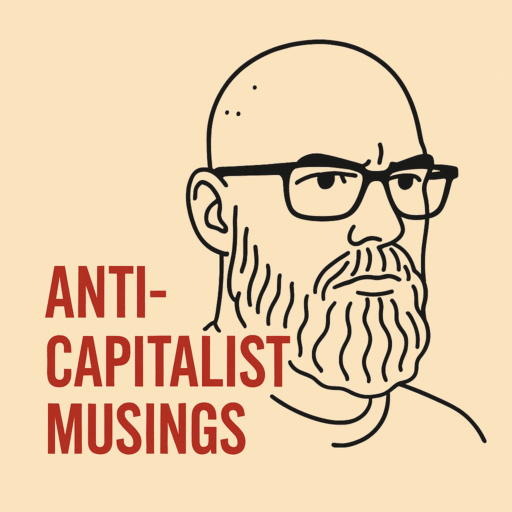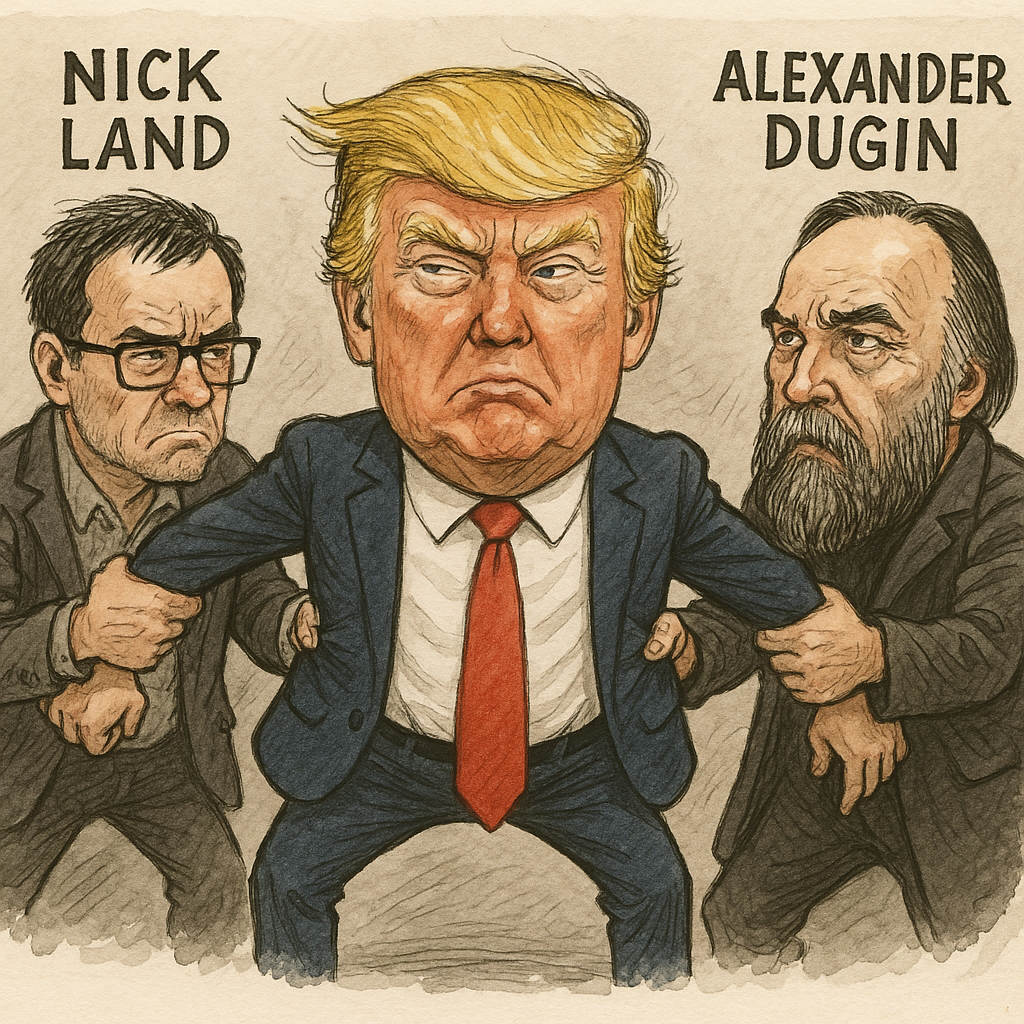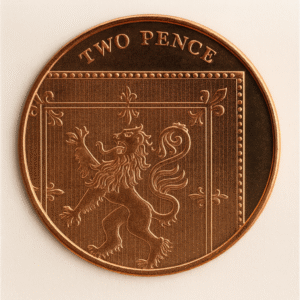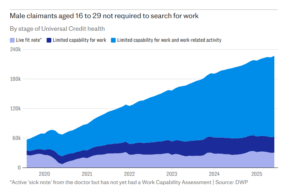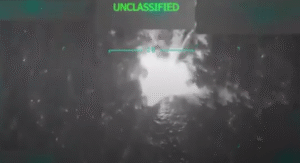I. Trump through Land’s Lens
Nick Land is a difficult figure to pin down: a philosopher of cybernetic1 flows who wandered from Deleuze to the Dark Enlightenment2, from Warwick seminars to Shanghai think tanks, from writing about capitalism as “an alien intelligence” to warning that democracy is a form of terminal decay. He is not a household name; outside small corners of the online far right, his work circulates more as mood than doctrine. But in Trump, Land found something approaching proof of concept.
Trump is not accelerationism3 incarnate. His programme is tariffs, border walls, fossil capital, and the authoritarian theatrics of loyalty oaths. If Land dreams of AI monarchs governing through blockchain protocols and cryptographic weapon locks, Trump dreams of reruns of The Apprentice. He is the cholesterol in the arteries of acceleration, not its bloodstream. There is another way to see it: Trump does not govern by policy but by performance. His medium is not the institution but the meme, the crowd worked into feedback loops of rage and laughter. His second term is less the restoration of a sovereign state than its reduction to the level of spectacle, where decision and image merge. He is less a sovereign than a Las Vegas conjuror, pulling rabbits from the hat of spectacle while the machinery of capital continues offstage. Land’s cybernetic monarch dissolves here into a casino host with a Truth Social feed.
This is acceleration in form, if not in content. The state itself becomes a social media platform; reality is administered through the feedback loops of cable news, Telegram channels, and Musk’s X. Trump is a degraded form of Land’s thesis: proof that democracy is already an exhausted husk, unable to regulate the forces (capital, code, resentment) that flow through it. In this sense, Trump is Landian not because he pushes us toward the Singularity4, but because he reveals the system’s inability to resist collapse.
II. Trump through Dugin’s Lens
If Land sees Trump as proof of entropy, Dugin casts him as proof of destiny. For Dugin, Trump is not cybernetic collapse but multipolar renewal. His victory, both in 2016 and again in 2024, demonstrates that liberalism is not eternal, that the American imperium can be fractured from within. Dugin’s writings are thick with mystical language: the Fourth Political Theory5, the return of the sacred, the battle between a unipolar and a multipolar world6. Trump does not need to consciously embody any of this. His role is symbolic.
For Dugin, Trump is the American analogue of the Russian tsar: not a philosopher but a vessel, not a strategist but a sign. He represents what Dugin now calls “dark accelerationism,” a fusion of technological power with theonomy and ethnos, a Right-Hand tradition that can co-opt the Left-Hand speed of capital. Trump is, in this scheme, the man who proved the West could deviate from its liberal course. Even Musk and Thiel, in their techno-libertarian excesses, become tolerable so long as they are oriented against liberal “woke” dogmas.
But here too the fit is uneasy. Dugin insists that acceleration must be anchored in tradition, that speed alone is poison unless tempered by depth. Trump, however, does not anchor anything. His politics are not depth but improvisation, not Orthodoxy but branding. To imagine him as guarantor of a civilisational turn is to mistake the symptom for the cause: to project onto him a coherence that he does not, and cannot, possess.
III. Trump as Symptom of Crisis
Between Land’s speed and Dugin’s depth, Trump hovers as a kind of projection screen. Land sees in him the proof that democracy is spent. Dugin sees in him the proof that liberalism can be toppled. In reality, he is neither philosopher’s ally. He is simply the vulgar interface between capital in crisis and the masses it still needs to rule.
What unites Land and Dugin is their refusal to ground analysis in material relations. For Land, capital is not a set of class relations but an alien intelligence to be unleashed. For Dugin, history is not a conflict of classes but a struggle of civilisations, guided by metaphysical forces. Each denies the reality that Trump most clearly reveals: that liberal democracy is collapsing because capitalism itself is in systemic crisis—ecological, financial, geopolitical. Neither acceleration nor tradition can overcome that contradiction; both are ideological cloaks that make crisis look like destiny. The trick is old: when capital trembles, its apologists drape collapse in metaphysics. Land calls it cybernetics, Dugin calls it the sacred, but the material rot remains the same
The attempt to reconcile Land’s accelerationism with Dugin’s traditionalism is not novel. The 20th century offers its own genealogy of fascist projects that fused myth with machine. Jeffrey Herf called it “reactionary modernism”: the Nazi attempt to marry industrial modernity to archaic blood-and-soil mysticism. Hitler’s Germany was not anti-technology; it exalted the autobahn, the V-2 rocket, the radio, but always framed them as tools in service of eternal racial destiny. The SS could recite runic invocations while riding in a Volkswagen. Technology was never emancipatory; it was subordinated to myth.
Italian Futurism, too, carried this paradox. Marinetti’s paeans to the speed of the motor car, the beauty of war as “the world’s only hygiene,” were intoxications of acceleration yoked to nationalist fervour. The Futurists despised liberalism but were enthralled by the machine. Their embrace of Mussolini was not incidental; it was the logical culmination of their attempt to aestheticise speed while disciplining it through tradition. Trump is the tawdry replay: where Mussolini had parades and Marinetti had manifestos, Trump has meme stocks, NFT trading cards, crypto schemes, and a Trump Store peddling MAGA mugs and pickleball fluff into the present. The machine and the myth still fuse, but now in parody.
“We declare that the splendor of the world has been enriched by a new beauty: the beauty of speed. A racing automobile with its bonnet adorned with great tubes like serpents with explosive breath … a roaring motor car which seems to run on machine-gun fire, is more beautiful than the Victory of Samothrace.”
The Futurist Manifesto
Land and Dugin, for all their differences, re-enact this script. Land insists capital must be liberated from democracy’s dead weight; Dugin insists technology must be filtered through theonomy and ethnos7. One worships the flow, the other the root. Trump offers the occasion to imagine that these can be fused: a politics that accelerates while returning, that moves fast while looking backward. It is not a “new Left-Hand Path,” as some would have it, but a reheated fascist formula. The dream of making the machine serve the myth.
The history matters. Reactionary modernism did not resolve the contradictions of capitalism; it brutalised them. It mobilised the technologies of the modern age (from film, radio, to highways) for a genocidal project that ultimately consumed itself. The Futurists’ exaltation of speed led to the mud of Abyssinia and the wreckage of the Eastern Front. To watch Dugin and Land circle around Trump as if he offers their reconciliation is to see this pattern replayed, stripped of grandeur, reduced to the level of meme stock and casino populism. What was once sold as destiny is now performed as farce.
Conclusion
Trump is not the fulfilment of Nick Land or Alexander Dugin. He is their parody. He confirms their shared sense that liberalism is finished, but he offers no coherent successor. Land dreams of post-human sovereignty; Dugin dreams of Orthodox tradition. Trump dreams of ratings. He is not the monarch of acceleration nor the prophet of Eurasian destiny. He is a bloated vessel drifting on the ruins of liberal order, filled with other people’s dreams.
If there is a reconciliation between Land and Dugin, it happens only at this level: each needs Trump as symptom. But to confuse symptom for cause is to miss the point. The real driver is the crisis of capitalism, which pushes both technolibertarians and traditionalists toward authoritarian fantasies. Trump is not their leader. He is their alibi. A degraded heir to the fascist tradition of fusing technology with myth, presiding not over renewal but over decline.
Here the genealogy slides forward into our present. What the Nazis once staged with autobahns and V-2 rockets, and what the Futurists exalted in motorcars and airplanes, Silicon Valley now rehearses with crypto, AI, and the race to Mars. “Techno-feudalism” is only the latest branding of an old project: billionaires like Musk and Thiel playing the role of philosopher-kings, promising acceleration while building their own citadels of extraction, subsidised by the very states they claim to transcend. The fascist script has not vanished; it has been digitised. Land baptises it as cybernetic necessity, Dugin as civilisational destiny, and Trump as populist showman sells it back to the crowd. What unites them is not vision but evasion: the refusal to name capitalism as the driver of collapse. Decline is recast as fate, spectacle becomes prophecy, and authoritarianism is smuggled in as the future.
FOOTNOTES
- Cybernetic: From the Greek kybernētēs (steersman), the term comes from Norbert Wiener’s mid-20th-century work on control systems and feedback loops. In Land’s usage, it denotes a world in which information, markets, and machines operate as self-regulating networks, often imagined as more decisive than human agency. ↩︎
- Dark Enlightenment: A term coined by Nick Land in the early 2010s to describe his rejection of liberal democracy and embrace of neoreactionary thought. Where the original Enlightenment elevated reason, progress, and equality, the “Dark Enlightenment” extols hierarchy, monarchy, and technological acceleration as the true engines of history. ↩︎
- Accelerationism: A contested concept originating in late 20th-century philosophy, later reworked by Land. In its right-wing form, accelerationism holds that capitalism’s contradictions and technological advances should not be resisted but intensified, hastening the collapse of liberal democracy and opening the way to authoritarian or post-human futures. ↩︎
- Singularity: A concept from futurist and transhumanist thought (popularised by Ray Kurzweil), referring to the hypothetical point at which artificial intelligence surpasses human intelligence, triggering runaway technological change. For Land and other right-accelerationists, the Singularity is not catastrophe but telos: capitalism’s “final acceleration” beyond human control. ↩︎
- Fourth Political Theory: Alexander Dugin’s attempt to construct an ideological alternative to liberalism (the “first” political theory), Marxism (the “second”), and fascism (the “third”). He blends elements of traditionalism, mysticism, and geopolitics, centring on theonomy and ethnos rather than class or individual rights. ↩︎
- Unipolar / Multipolar World: In geopolitical theory, a unipolar world refers to a global order dominated by a single hegemon (since 1991, the United States). A multipolar world denotes a system with several centres of power (Russia, China, the EU, etc.). For Dugin, the struggle between unipolarity and multipolarity is metaphysical as much as strategic: the battle between liberal universalism and a civilisational pluralism rooted in ethnos and theonomy. ↩︎
- In Dugin’s lexicon, theonomy (divine law) refers to the reassertion of religious authority (above all Russian Orthodoxy) as the foundation of political life, while ethnos signals a quasi-mystical notion of peoplehood, a fusion of blood, land, and tradition. Both are central to his Fourth Political Theory, which sets itself against secular liberalism and class-based analysis alike. ↩︎
